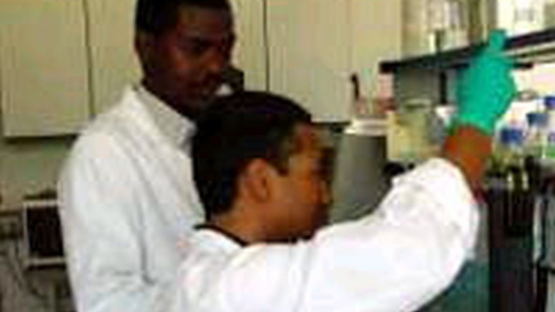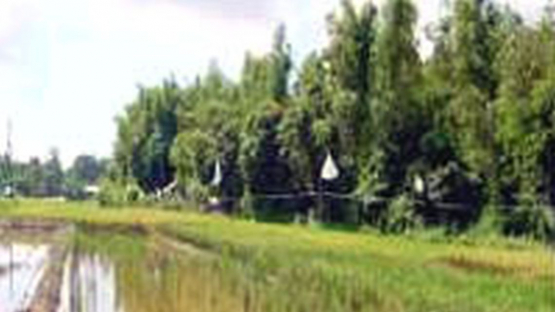Twenty five years ago, the IAEA initiated a research programme on the development of in vitro mutagenesis in banana at the Plant Breeding Laboratory and since then has developed considerable and unique knowledge on the use of mutation techniques and related biotechnologies in Musa. Seibersdorf became famous and internationally acknowledged for its leadership in banana biotechnology. Through 25 TC projects and 2 CRPs on banana, in vitro mutagenesis on banana has been implemented in several banana-producing countries. Three mutant banana varieties are worth mentioning here:
- Novaria in Malaysia (early flowering),
- Klue Hom Thong KU1 in Thailand (bunch size and cylindrical shape), and
- Albeely in Sudan (out-yielding local varieties by 30% to 100%).
More mutants are in the pipeline for varietal release in Cuba, Malaysia, The Philippines and Sri Lanka. The targeted traits are improved agronomical characters such as height reduction, earliness and larger fruit size. Although disease resistance seems to be more difficult to be gained through mutation induction techniques, mutants tolerant to the toxin from the disease agent were obtained by PBU at Seibersdorf, and are about to be screened in the field. Through the recent FAO/IAEA/GDIC Coordinated research Project (completed in 2002), we have established an interregional network on the use of mutations for banana improvement. Furthermore, techniques and methodologies have been developed and transferred, which have set the stage for the creation of a Global Musa Genomics Consortium hosted by Bioversity International (Montpellier, France). Banana through the Global Musa Genomics Consortium and programme considering its small genome size has a chance of becoming a model plant for vegetatively propagated crops. This has led to the development of a TILLING platform for banana -an invaluable resource for reverse genetics and breeding for the global community - in the Plant Breeding Laboratory of Seibersdorf.
The Plant Breeding and Genetics Laboratory (PBG Laboratory) is one of five laboratories that make up the Joint FAO/IAEA Agriculture and Biotechnology Laboratories at Seibersdorf. As a part of the Sustainable Intensification of Crop Production Systems (SICPS) sub-programme of the Joint FAO/IAEA Centre, the activities of the Plant Breeding and Genetics Section (PBG) and PBG Laboratory are aimed at assisting national plant breeding programmes in the use of mutation techniques and modern biotechnologies to develop better varieties of major and under-utilized food and industrial crops. At the PBG Laboratory, we carry out this task through the provision of services; individual and group training programmes; and through research and development activities.







